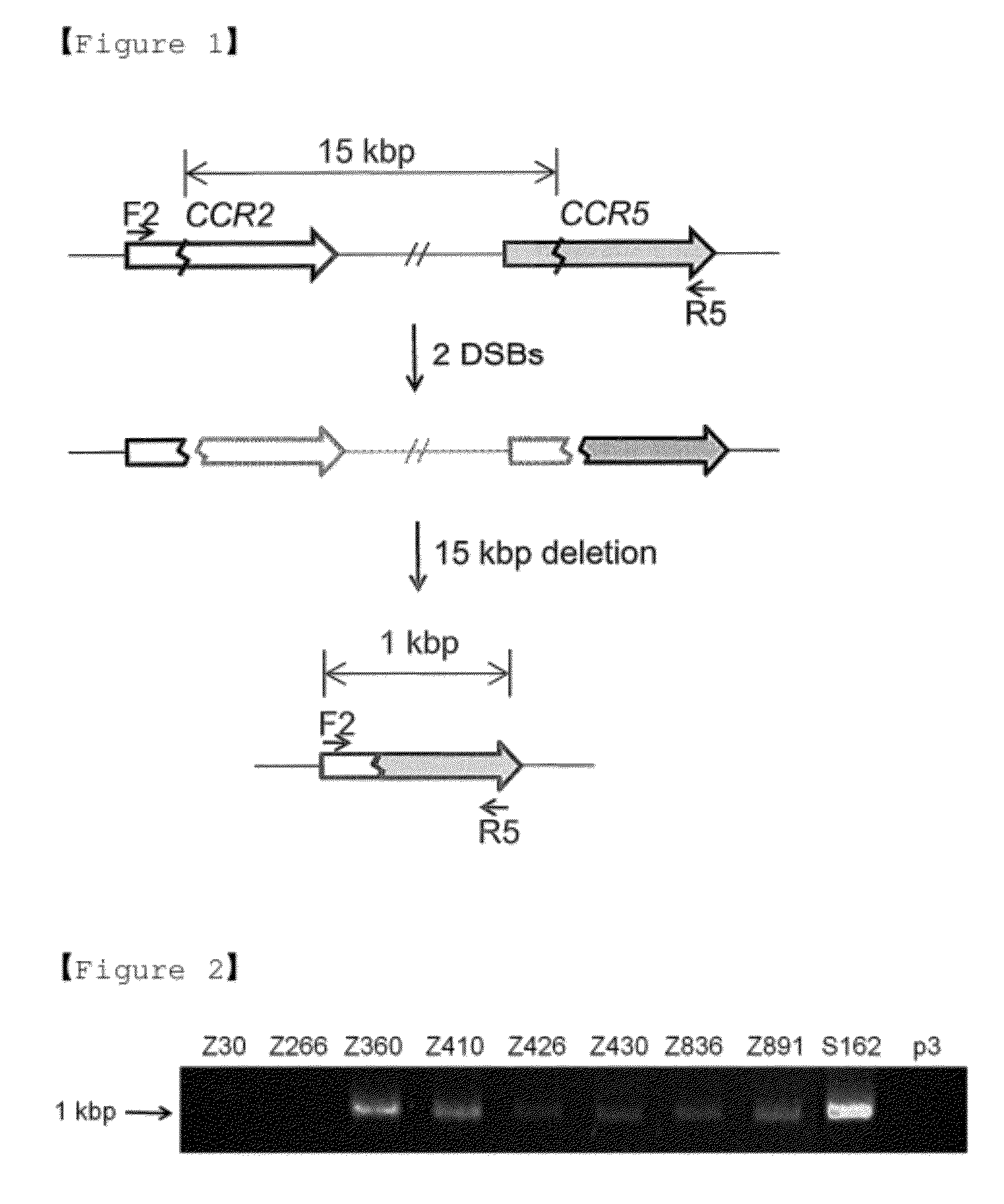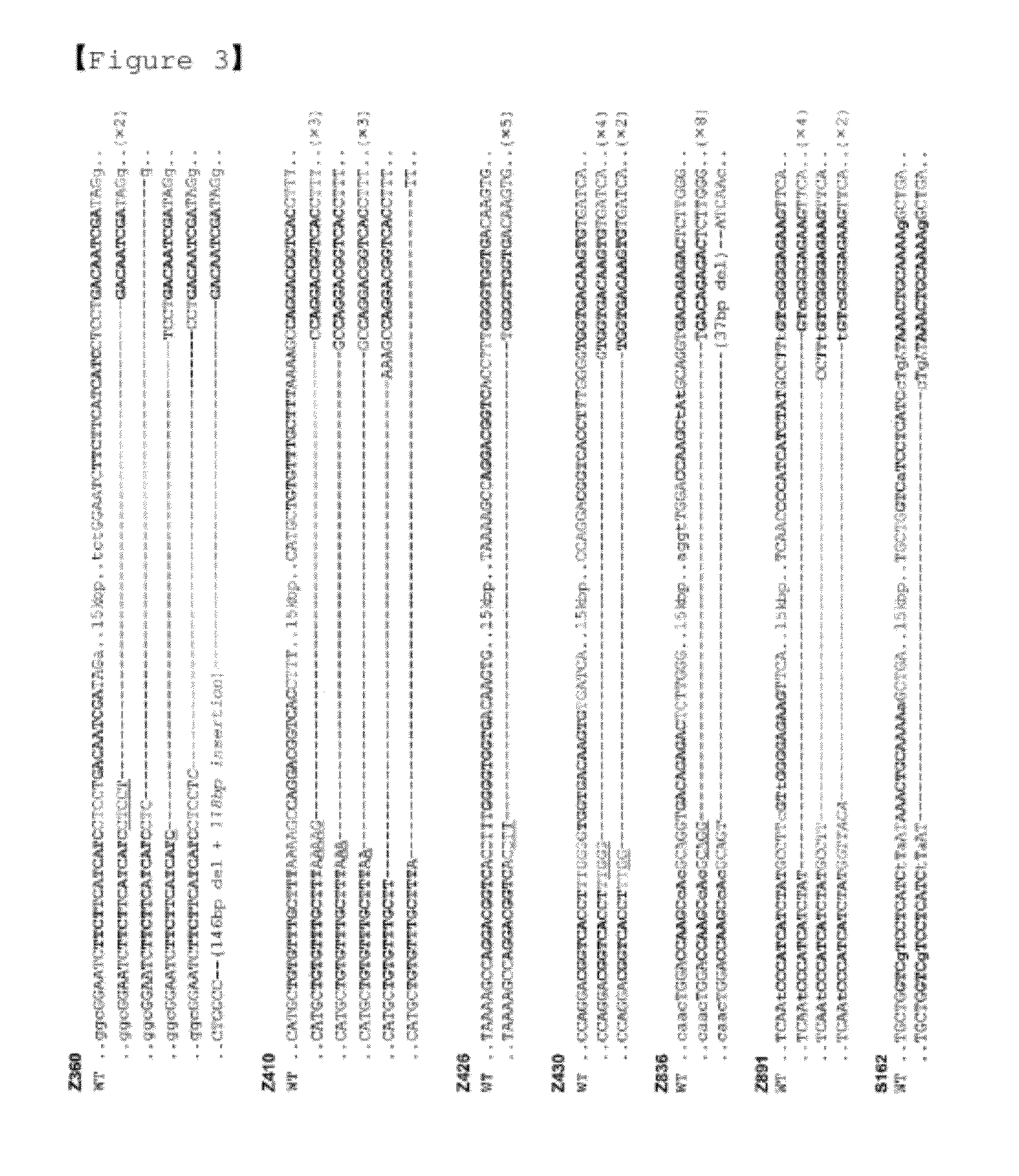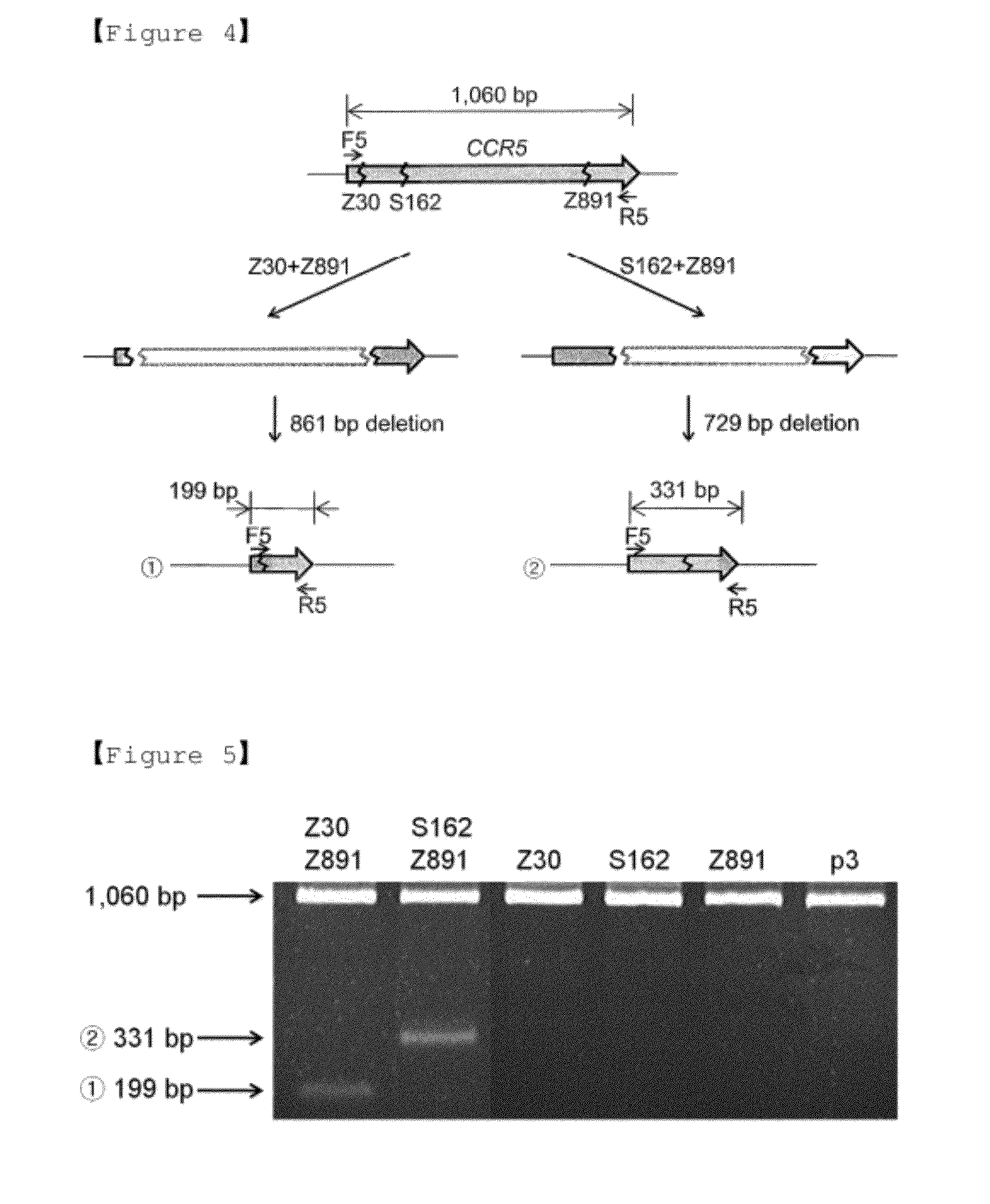Targeted genomic rearrangements using site-specific nucleases
a genomic and site-specific technology, applied in the field of genomic dna rearrangement, can solve the problems of inability to manipulate genomic scripts in cells, limited recombinant dna technology, and current methods of genome engineering are not the versatile tools of in-cell recombinant dna technology
- Summary
- Abstract
- Description
- Claims
- Application Information
AI Technical Summary
Benefits of technology
Problems solved by technology
Method used
Image
Examples
example 1
CCR5-CCR2 Deletion
[0103] CCR5-CCR2 Deletion
[0104]ZFNs targeting the CCR5 gene were produced (Kim et al. 2009). Since many but not all of these CCR5-targeting ZFNs may also show site-specific genome editing activities at the corresponding, homologous sites at the CCR2 locus, it was investigated whether these ZFNs could induce large genomic deletions in addition to site-specific point mutations at each locus.
[0105]HEK 293 (Human embryonic kidney 293) cells were transfected with ZFN expression plasmids and, after 3 days, genomic DNA was isolated therefrom, and used as a template for DNA amplification to detect genomic deletions. Used were two primers, whose sequences correspond to the CCR2 region or to the CCR5 region and are separated by 16 kbp (FIG. 1). The primer sequences used in the experiment are summarized in the following Table 2.
TABLE 2Table 2. Primer for PCRPrimer NameSequence (5′ To 3′)SEQ ID NO.F2CCACATCTCGTTCTCGGTTT18R2GCACCTGCTTTACAGGTTTCT19F5ATGGATTATCAAGTGTCAAG20R5TCACA...
example 2
Deletions by Two ZFN Pairs
[0111] Deletions with Two ZFN Pairs
[0112]We next confirmed that two ZFNs targeting two different sites could induce deletions of the intervening DNA segments. For this analysis, two sets of CCR5-targeting ZFNs were chosen, and combinations of Z30+Z891 and S162+Z891 were used for the analysis. Genomic DNA was isolated from cells expressing two ZFNs, and the CCR5 coding sequence was amplified. The Primer sequences used in PCR are summarized in Table 2.
[0113]As a result, the amplification of a 1,060-bp DNA corresponding to the entire CCR5 coding region was observed in the wild-type genomic DNA (no DNA deletion), and the amplifications of a 199-bp DNA band and a 331-bp band were observed in cells expressing the Z30+Z891 set and the 5162+Z891 set, respectively (FIGS. 4 and 5). However, the PCR products were not observed in cells expressing no ZFNs or expressing only one ZFN of two ZFNs.
[0114]Base Sequence Analysis of Deletions by Two ZFN Pairs
[0115]These PCR pro...
example 3
Large Nested Deletions
[0117]It was investigated whether it is possible to delete very long stretches of DNA from the human genome using two ZFN pairs. To this end, a series of ZFN pairs was synthesized, whose target sites lie far upstream of the CCR5 locus. 17 naturally-occurring zinc fingers encoded in the human or Drosophila genome were used as modules to assemble 4-finger ZFNs (that is, ZFNs that consist of tandem arrays of four zinc finger modules) (Table 1).
[0118]Each of the zinc finger modules recognizes 3-bp sites, and each of the 17 zinc fingers recognizes different 3-bp sub-sites and, collectively, they cover 21 out of 64 triplet sub-sites. Because ZFNs function as dimers, two 4-finger ZFN monomers were prepared per site to prepare ZFN targeting one site. 4-Finger ZFNs recognize two 12-bp half-sites or 24-bp full sites. A total of 30 ZFN pairs were synthesized and these newly prepared ZFNs recognized sites 30 kbp to 46 Mbp upstream of the CCR5 locus.
[0119]Each ZFN pair was ...
PUM
| Property | Measurement | Unit |
|---|---|---|
| length | aaaaa | aaaaa |
| size | aaaaa | aaaaa |
| sizes | aaaaa | aaaaa |
Abstract
Description
Claims
Application Information
 Login to View More
Login to View More - R&D
- Intellectual Property
- Life Sciences
- Materials
- Tech Scout
- Unparalleled Data Quality
- Higher Quality Content
- 60% Fewer Hallucinations
Browse by: Latest US Patents, China's latest patents, Technical Efficacy Thesaurus, Application Domain, Technology Topic, Popular Technical Reports.
© 2025 PatSnap. All rights reserved.Legal|Privacy policy|Modern Slavery Act Transparency Statement|Sitemap|About US| Contact US: help@patsnap.com



